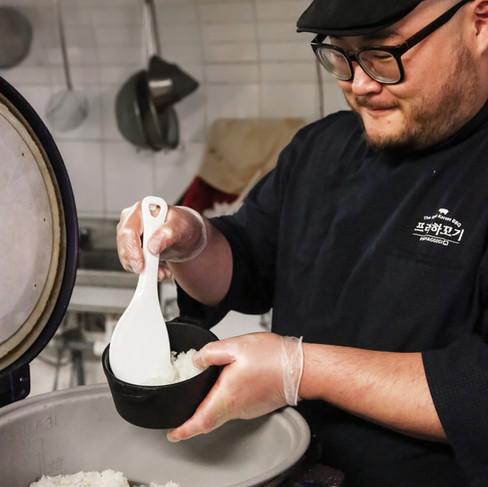Our Soban Course Menu – Taste the Richness of Korean Cuisine!- 3 course menu with our Korean chef's story
- Numaru Prague
- 11. 7.
- Minut čtení: 3

Our Soban Course Menu – Taste the Richness of Korean Cuisine!
Bibimbap has become a firm favourite amongst our guests and remains one of Korea's most
recognised dishes worldwide. Here at Numaru, we've offered various toppings - chicken, beef, tofu - but recently we felt inspired to create something more ambitious. Rather than simply serving another bowl, we wanted to craft a Korean course meal with its own narrative, taking diners on a journey
from first bite to last.
How the Soban course came into being
"Soban (小盤)" refers to a traditional Korean table setting - an intimate, carefully arranged meal
for one person. We've embraced this philosophy wholeheartedly,making sure every dish is served
with sincerity and arranged in a smooth, easy-to-enjoy way – perfect for those new to Korean food.

Menu composition
The course starts lightly with kimchi pancake. Crispy and flavourful, it wakes up your appetite. Next comes the star: yukhoe bibimbap (Korean raw beef bibimbap) paired with seaweed soup. We round things off with yakgwa (traditional Korean honey biscuits) and green tea ice cream.
Yukhoe bibimbap holds a special place in Korean hearts – it's been cherished for generations.
In Czechia, we often draw parallels with tatarák to help guests understand what they're in for. Whilst both feature raw beef, tatarák is typically enjoyed with bread, whereas yukhoe bibimbap gets mixed with rice, vegetables, and sesame oil – creating an entirely different and rather special experience. Initially, some guests approach it with understandable caution, but after that first proper bite, many are genuinely surprised by how harmoniously everything works together. The cold beef, warm rice, nutty sesame oil, and the crispy texture all blend beautifully in one bowl. We serve two sauces with the bibimbap: a mild soy sauce-based one and a spicy gochujang (red chili paste) sauce. We always recommend trying half with each sauce, and wrapping it in seaweed is also a great way to enjoy it. This mix of sauces shows how the same ingredients can taste very different – that’s the fun of bibimbap.
The seaweed soup is more than just a side. Many international guests tell us, "This soup is genuinely comforting." It's neither oily nor spicy, just warming and gentle, making the entire meal feel cohesive and soothing.
Main course with chef's story
Our chef's heritage shines through this menu. Hailing from Jeolla Province, an area renowned for exceptional bibimbap, he approached this course with particular passion. "I want people to taste not just the flavours but feel the place and atmosphere they come from," he explained. His words inspired us to pay meticulous attention to how each dish connects with the next.

Sweet mamuri
The meal concludes with yakgwa and green tea ice cream – a mix of traditional sweetness and contemporary flair that leaves you satisfied but not overstuffed. Some guests are pleasantly surprised to discover these Korean desserts, and others say, “I wish I could buy this ice cream separately!”



















